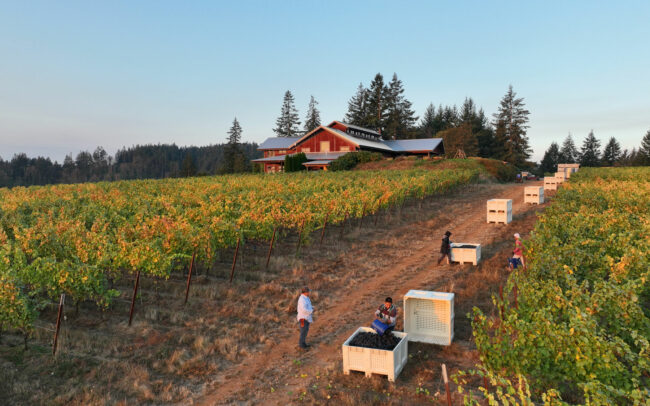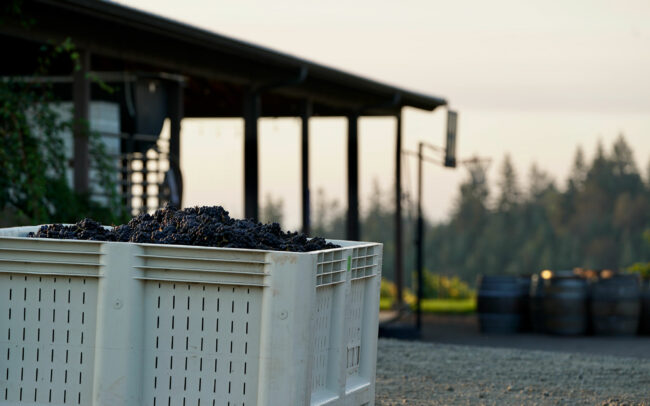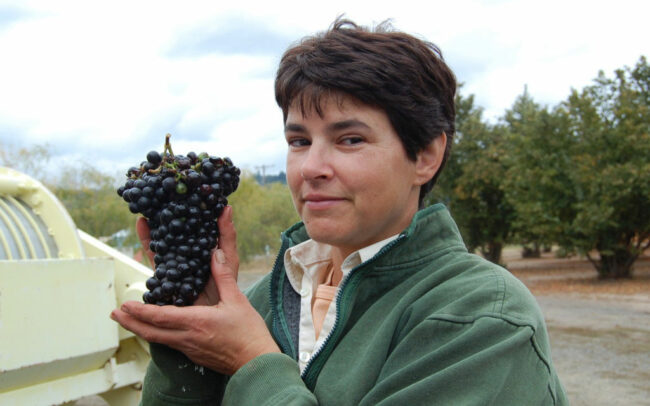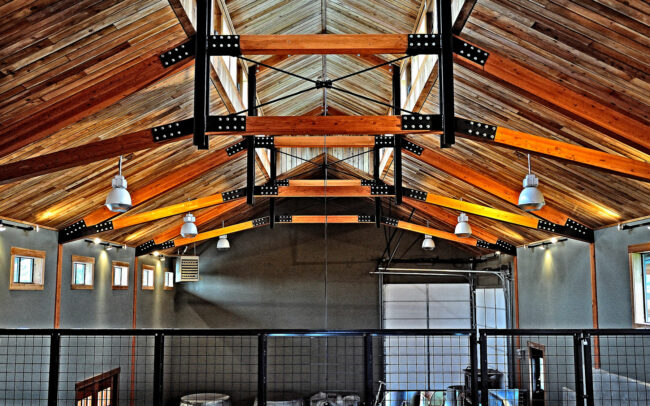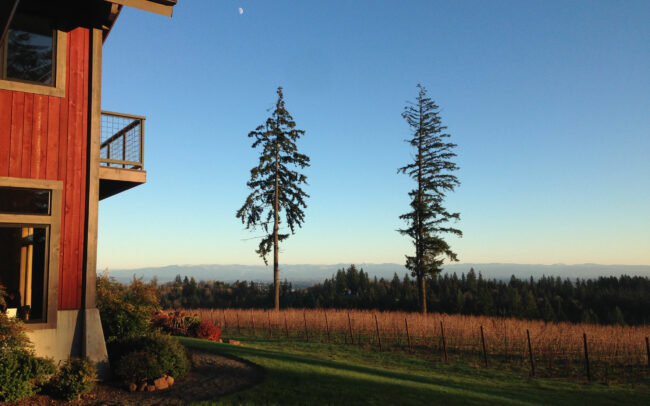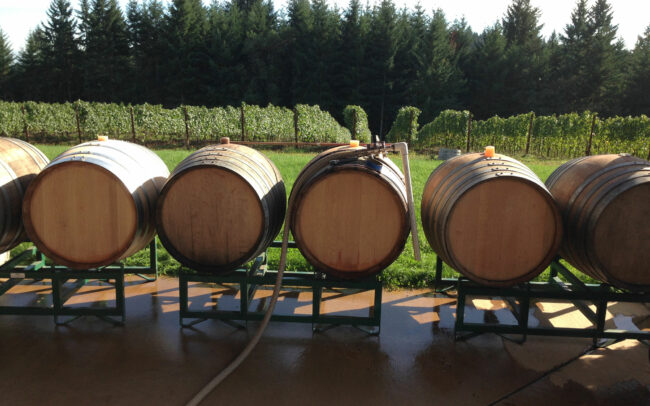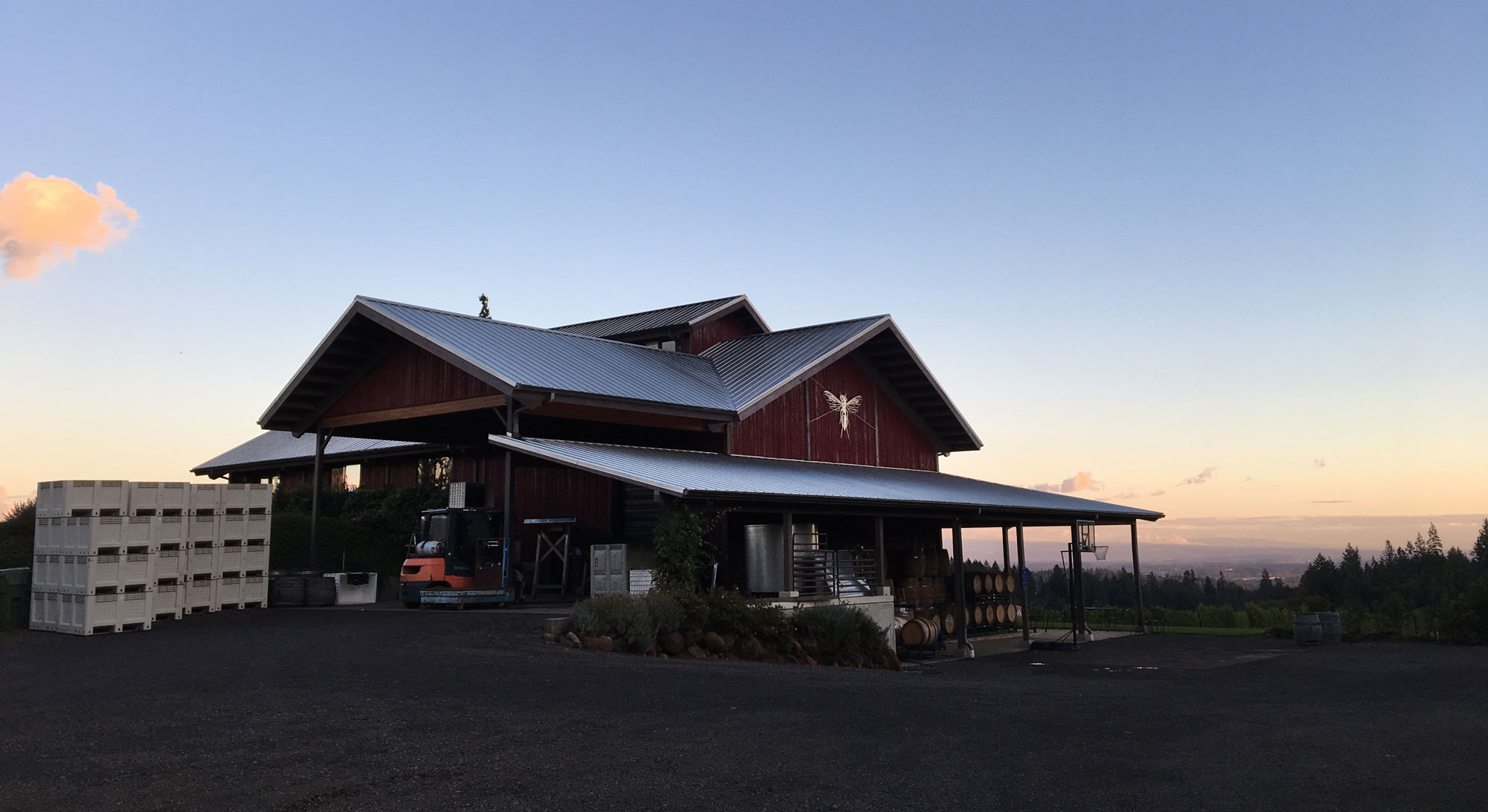
History of J.K. Carriere
The big face above + the contraction of one’s grandfathers’ names J.K. Prosser & Paul Carriere + an insect that can kill you + a couple of decades can lead to authenticity.
My name is Jim Prosser, and in 1999, post dress-for-success, post finance, post crazy-shit-out-on-the-world, post eight Pinot producers in OR, NZ, AU and France, I returned to Oregon and started J.K. Carriere as my best guess at a recognizable life.
At the outset it was just me — strapped, buying grapes and MacGyvering a 100-year-old barn into a winery. When the accolades of ‘’pure wine’’ ensued and the late nights and ramen got old, “me” led to “we.”
In 2007, we willed our way into 40 acres of the best virgin hilltop imaginable. In 2008 we stood up a winery of beauty and simple physics. In 2009 we started planting and called it St. Dolores Estate, a nod to our mom. By the time of our 20th anniversary, we were farming 38,000 vines on 26 acres.
And authenticity? Twenty-four years in, via soil, tractors and bottles, we’re coaxing it every day.
Nerd Alert - Click To Read Jim's quirky Bio
Six sisters / Bend, OR / Family hardware store / Oregon State Univ / Xerox Corp / Porsche / Marriage / Comm. Real Estate Finance / Un-marriage / Sell House / Peace Corps – Lithuania / Climbing in the ‘Stans / Bicycling across U.S. / Broke / Winemaking in OR, NZ, AUS, France / Deadly wasp allergy / Bootstrapped JKC winery – old barn; unpaid / Pulled in sister Linda – GM / Married sugar momma in education – still unpaid, but health insurance / Self-employed – paid / 40ac hilltop – bought / Built new winery / 1st Tractor / +7ac – organic / Recession / Daughter – Lola / “Our” grapes / 2nd Tractor / +5ac / 3rd Tractor / +5ac /Intense Biological Farming / +5ac / Lucas – Asst WM / 20th Anniv. / Pandemic / Wildfires / Magic Drew – vnyd / Tractor – shiny side down / 4th Tractor / Rain short / Vines strong / Sales great / Climate heating / Inventory scarce / Best wines yet
— Owner/winemaker Jim Prosser
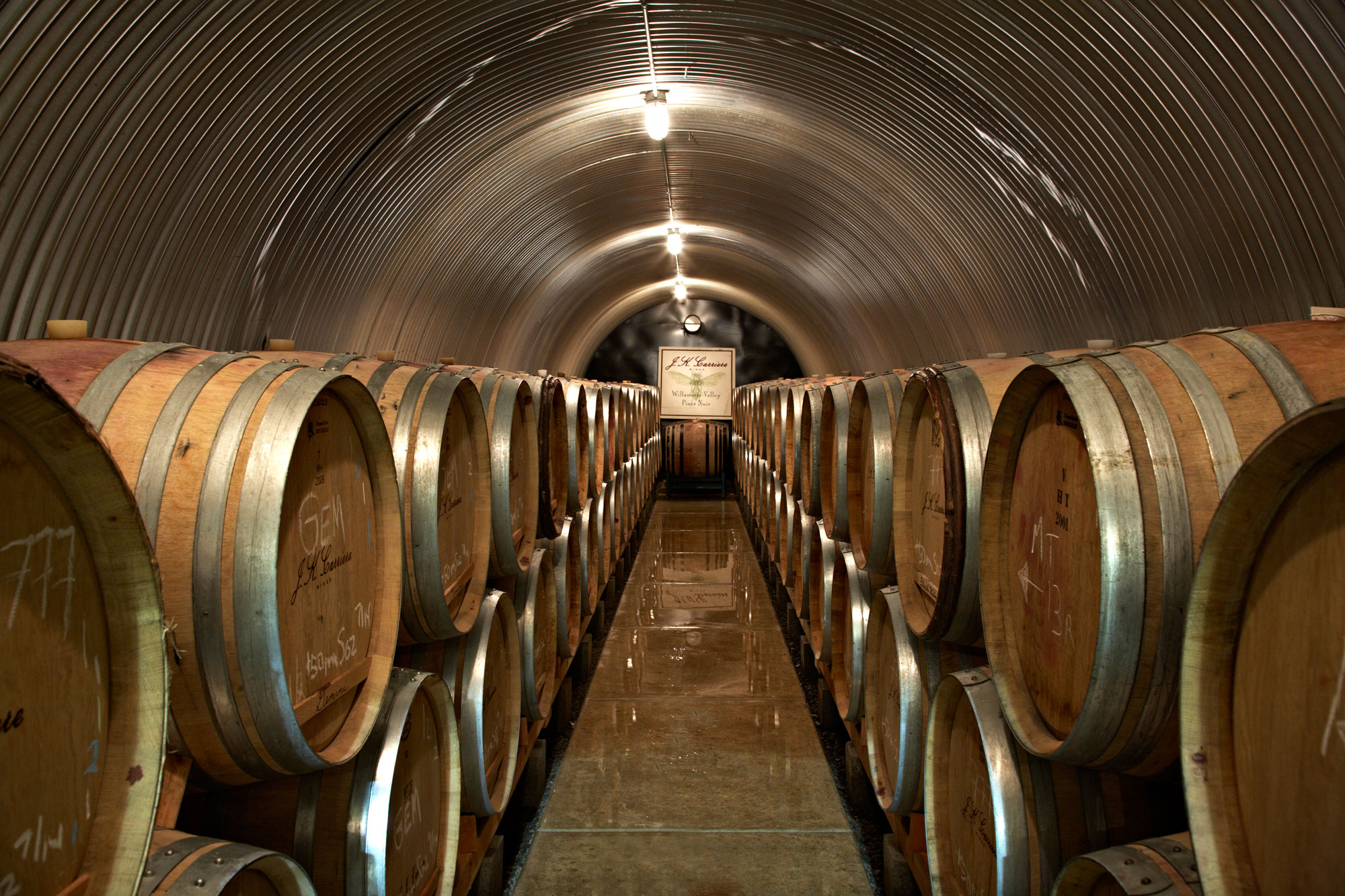
Winemaking
“All the pretty words,” is often our response, when faced with the winemaker’s question/checklist. To be sure, our strong hands and sharp minds are in the wine, but not a lot else. We use them to produce what we think matters: Translating site and season into a compelling truth in your glass.
Our quality decisions are year-long in the vineyards, and at pick, parameters narrow to a dozen in which we favor the early side of ripe. Grapes are early morning harvested, cold and by hand. Sorted and destemmed into three-ton open-top tanks, the grapes will cold soak for six days before the wild yeast fermentation gets in full gear. We’ll taste, track and extract, or not, twice a day over their 23- to 30-day run, then pull off, settle overnight and put down to select French oak barrels (+16% new) to undergo wild-malolactic during the balance of their 18 months before going to bottle.
The pretty words are: Early pick/high acid/wild-yeast/minimal sulfur/moderate extraction/targeted kinetics/lees ageing/subterranean cellaring/18 mo/French oak/wild-malo/unfined/unfiltered.
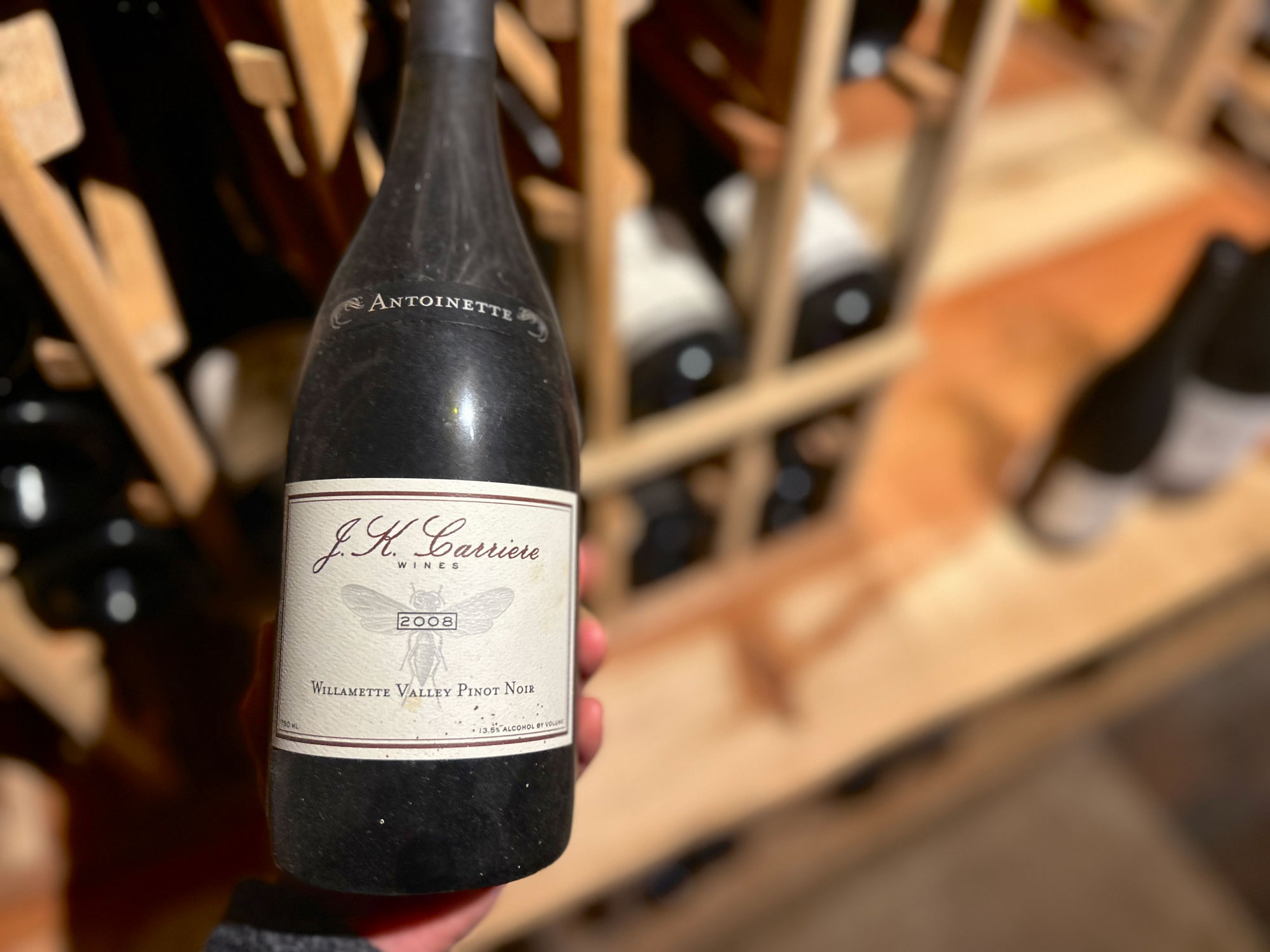
Ageability
We are absolute believers in the complexity and subtle nuance brought about by aged wines, specifically Pinot Noir going to bed on acid. It’s by virtue of having experienced “epiphany moments,” with largely non-domestic wineries, that compels us to work with intention to make some of the most ageable Pinot Noirs in the world. Wines have to be purpose built to do it. Our Pinot Noirs will show well — primarily fruit and slightly demure — at release, better with some air. Over the next three years fruits will multiply and the wines will put on heft, as they climb “in-the-pocket” of real drinkability. From there it’s a multi-year run of complexing secondary flavors, acting like tasty contract addendums, to the fruit: cardamom, cigar box, saddle leather, kirschwasser. We are dedicated to giving customers a map to the bottles in their cellar, and annually produce a Cellar Guide, which speaks to the ageing status of those wines.
Nerd Alert - Click to Read More
I think about my bottle cellar like some kind of old-time steam-train transporting poets and political prisoners by birth dated car on an endless rail towards an unknown horizon. I am but an emboldened guerilla fighter frequently boarding the train and liberating these personalities, on my whim, for their vibrancy and companionship. Not all will turn out to be gems, but the vast majority will be interesting and some will haunt my memories for a lifetime. Viva le Vieux Vin!
Funny, for maybe thirty-five years I’ve been happily waging the battle for quality aged, appropriately cellared, wine. And it’s really only recently that I had the tragic realization that I might be part of a dying breed to know or value what for me is such a joyous and wondrous ritual. I won’t overstep my rank in regards to worldly aged wines and I’m not telling you what to believe about the world, nor at all certain that I’m preaching to the choir, but I’m up for the try.
To know god’s hand is impossible, you know, from a scientific standpoint, though I’ll wager that belief can be tasted. Demanded probably not. Rather, it’s afforded in small unexpected glimpses when intention plus a modicum of hope and a moment of attention have been paid. I’ve yet to taste “it” in a bottle under three years of age, nor in a “pull-it-and-pound-it” wine, never in a crowd or at a wedding, and only once in the presence of a gas bag.
What captures my imagination as a radical advocating for older bottles is myriad. Foremost, it can be a primer for a culture of grace, not necessarily over the top, just slowing down and treating that bottle like a friend amongst friends at dinner, as if its possibility is worth its presence. And just as ceremony is reverence, I say, stand the older soldier, salute his dated inscriptions and old tin, go in with archaic fulcrums and pocket knife helix to delicately remove the tree bark blockage, that his poetic heart might be poured forth, for interrogation, over lamb chops.
Is it clean, is it proper, is it unexpected? Usually. Often beautiful, sometimes not, almost always it’s a mystery. In seconds you start to know, unravel, that which could not be glimpsed seconds before. You’re off, on a liquid torrent to a plunge pool, whose admission can only be gained by momentarily pausing and crawling inward to your reptilian brain. It’s an indulgence, this pause, look, sniff, taste, think, reemerge, a six second AWOL. It opens you to fleeting questions, hazy associations, sniffed herbal hillsides, primordial musks, tasted summer fruits, amplitudes of acid and echoing textures. Admire the minute-by-minute evolution brought on by time and oxygen, and remember that too many words, are indeed too many. You’re in cahoots with the night wine conductor on the Geekville Express headed for bottle bottom. Occasionally, it’s an epic trip.
I’ll write last of it here, but the piece that this old-wine partisan fighter finds at least as compelling as anything previously mentioned is the storytelling of the label year. Yes, there are the forensics of the vintage, to great interest of some, and lesser to others, but there is the absolute humanity of the question: “What were you doing in that year?” Were you in a squall on Hurricane Ridge with your not yet betrothed? Was your mind being bent by the force of a Burgundy vintage? Was your father still alive? Was your daughter vamping Mick Jagger, as yet unsanctioned and unsanctionable by the world? To answer just one might occupy an evening.
This then is the game. This then is the beauty, the culture. This then is the totality of the list, and yet but a fraction of the things about aged wines of which I never tire. I will fight ‘til my death advocating for those crumbly corks, riding my train of bottle-age to its unknown horizon. Know that I’m speaking true when I tell you, it’s not moving too fast for you to jump on board.
— Jim
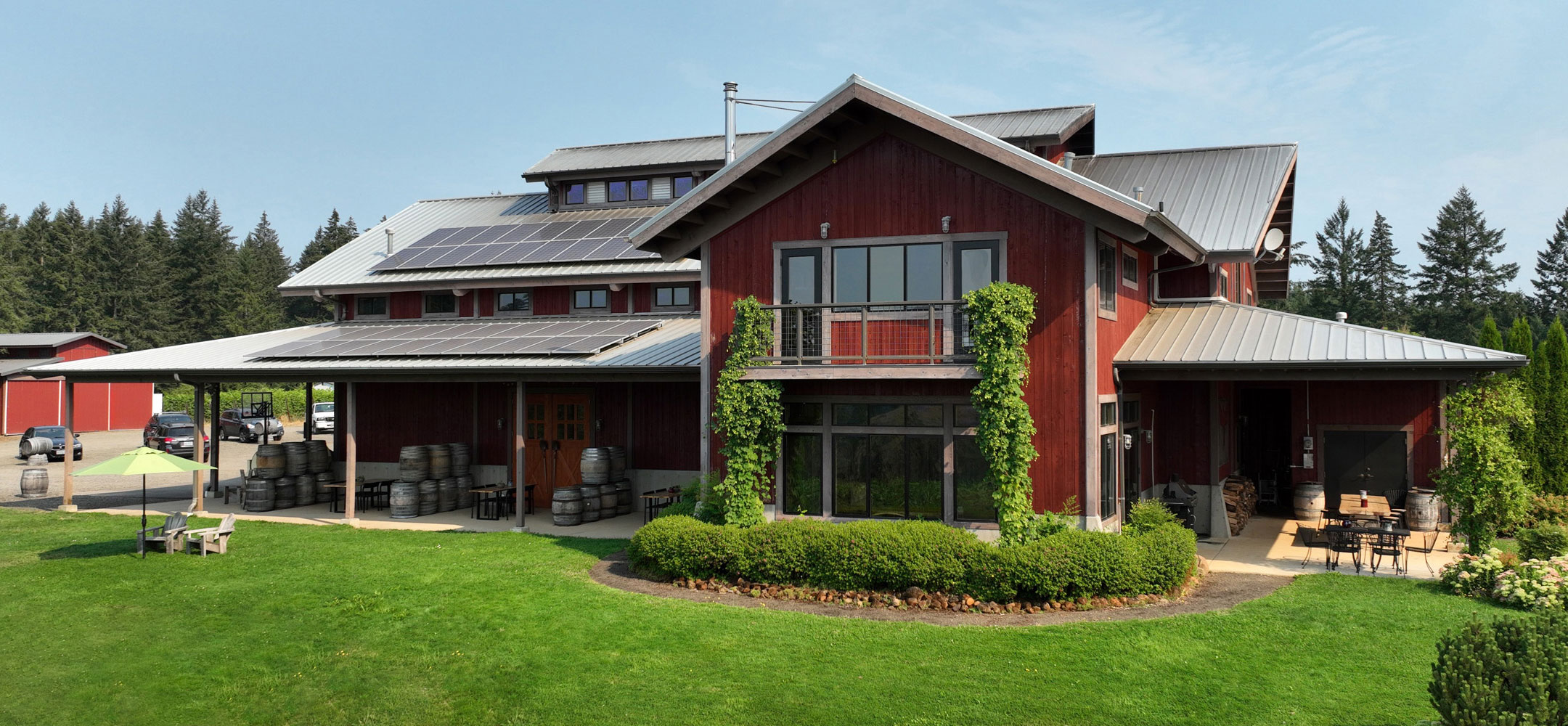
Sustainability
This is the place where you’re supposed to fall in love with our ethos as we advocate for our sainthood. I don’t see it. Mind you, we are thinking and trying and doing, but this climate change is the real shit. We’d like to implore an old climbing ethos of “leave no trace,” but nay, we’re leaving marks on the planet and unlikely to be going back to live in caves anytime soon.
So, instead we’re working to control what we can, to steward our corner of this planet, to not degrade it, to bolster the soils and to “leave it better” than we found it. The winery shoulders its environmental load via natural mass cooling including: highly reflective roof, subterranean barrel caves, night cooling dampers, super-thick cool-banking floors, clerestory heat evacuation, and solar panels.
On the farm we’re employing biologically intensive, certified organic (USDA), no till, pollinator friendly cycles, native cover crops, carbon sequestration, bio-char, onsite-at-scale composting, compost tea, mycorrhizal fungi, grazing sheep, and bolstering water holding capacity to further our non-irrigated, dry-land farming as a board member of the Deep Roots Coalition.
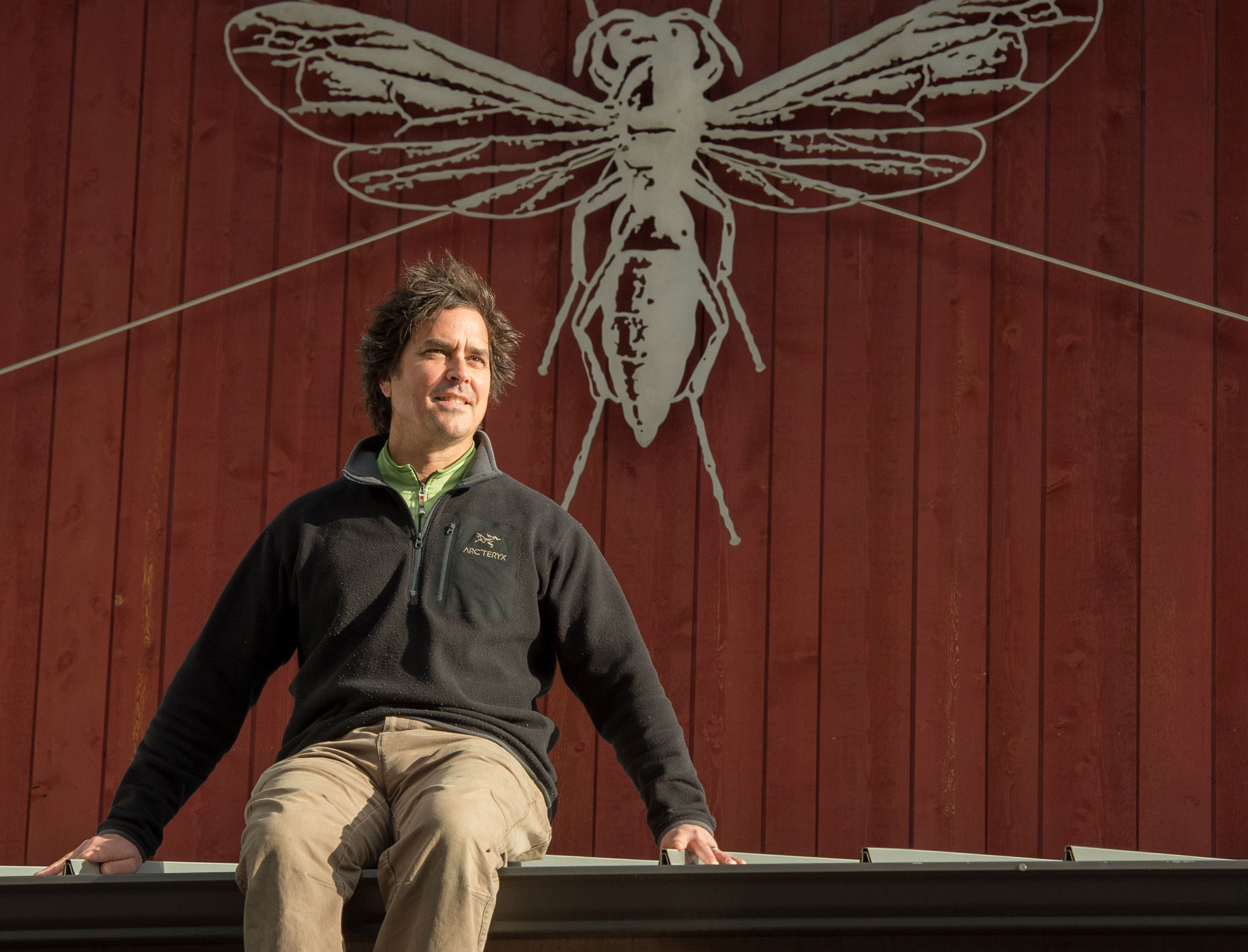
The Wasp
It’s real. Basically, and specifically, the members of the wasp family Vespidae continue to try and kill me. Severe allergic reaction is the problem, anaphylaxis is the reaction, and to date I’ve accumulated about 24 hours of ICU time around the globe. I don’t begrudge the paper wasp, yellow jacket and bald-face hornet, as they have their job, and I have mine, which occasionally turn conflictual. Though philosophically, if it’s real enough to kill you, it’s real enough to earn a place on your label.

